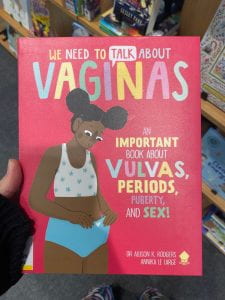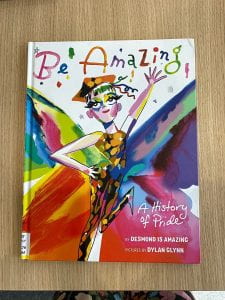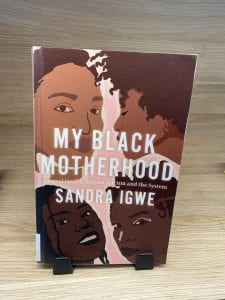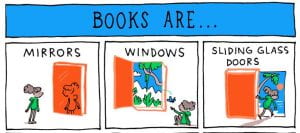Section 2: Theory into practice
As identified in my professional goals, I pursued a placement at a library which allowed me to explore how information services broaden children’s language development; how quality children’s literature is acquired and catalogued; and how information and digital literacies are implemented is such an institution. The Ipswich Children’s Library (ICL) was one such place that would allow me to explore my personal and ALIA aligned goals. Through my placement at the ICL, I was able to observe services offered (e.g., home library, LOTE Library, Maker Space), and assist with scheduled events (e.g., Toddler Time, Story Time, tours, First 5 Forever); as well as learning the administrative duties involved in working for a specialised library.
During my master’s degree, I have learnt about the characteristics of school libraries, and how they meet the interests and curriculum needs of students and teachers (ETL503). Similarly, the collection at the ICL has been carefully selected to support the learning and interests of its patrons. Through observing the Ipswich Libraries Collection Development and Logistics team (CDL), I was able to observe how their resources were selected, acquired, and maintained. Mirrored in ETL503, I learnt about how an effective, evolving, and ongoing collection requires a collection development policy (CDP) (Kimmel, 2014, p.p. 1-2). ALIA characterise the CDP as a tool which underpins the function of the library, providing purpose to the collection (2007, p.p. 3). Through a CDP, librarians can identify and acquire potential resources, remove from the collection, analyse the collections accessibility, and evaluate the collection in line with the library’s strategic direction (AILA, 2007). The CDP also deals with issues such as censorship, copyright, and challenged resources (Oberg & Schultz-Jones, 2015, p. 33-34). The Ipswich Libraries utilise a CDP which has been developed from evidence-based data, with a selection criterion consisting of nine categories:
- Relevance and current demand.
- Extent of popularity.
- Significance of the subject matter.
- Local interest.
- Relationship and importance to the overall content.
- Quality and appropriateness.
- Suitability of format for the intended audience.
- Date of publication.
- Pricing (City of Ipswich, 2023, pp. 4).
Additionally, the CDP encompasses patron driven selections, the scope of their physical and digital collections, local history, accessibility, community outreach, gifts and donations, and self-published materials (City of Ipswich, 2023, pp. 4-7). Through this policy and ongoing analysis and evaluation, the library can customise its collection to meet the needs of their patrons and wider communities (Debowski, 2001). In contrast to school libraries, the CDL does not process their resources in-house; instead utilising a third-party provider, James Bennett, to acquire and process their collection; with the CDL providing James Bennett with their budget, allocations, and other specifications to curate the collections.
As collections are at the core of library services, delivering and maintaining engaging, diverse, and accessible collections is key. However, local, national, and international changes/challenges are taking place within libraries, calling into question the diversity of their collections. One such challenge is censorship. During my time visiting the CDL, I was invited to an ALIA presentation regarding CDP development. The discourse reflected many themes seen within ETL503, but primarily focused on accessibility and censorship – which is timely due to the publicity surrounding the graphic novel ‘Gender Queer’ by Maia Kobabe (Taylor, 2023). After the presentation, I observed the CDL discuss their CDP and how it processed controversial resources and censorship claims in line with ALIA’s concept of intellectual freedom. ALIA states that intellectual freedom promotes free information and ideas for all Australians and contributes to a thriving culture, economy, and democracy; concluding that censorship cannot be supported (2023). The ICL does not have many “controversial” books, such as ‘Gender Queer’, due to their young patronage; however, the ICL does display a lovely collection of LGBTQI+ resources, alongside other books that represent the diversity of its patrons, such as First Nations and Immigrant themes and authors, ASLAN text, brail texts, and LOTE resources.



| Images: Examples of Inclusive Resources from the Ipswich Children’s Library (Harris, 2023) |
During my studies, I learnt that it is important that a collection reflect diversity, such as age, ethnicity, gender, physical abilities, race, sexual orientation, religion, socio-economic status, family constructs, geographical location, and world views and opinions (Workable, 2023). A library’s collection sends out powerful messages about their views on diversity and inclusion to its users and wider communities. Therefore, a collection should have a healthy mix of ‘mirror books’, where the patrons see their life or selves within the resource, and ‘window books’, where patrons learn about the lives of others through the resource (Lacy Asbill, 2020).

| Image: Mirrors and Windows (Lacy Asbill, 2020) |
Both public and school libraries must be culturally response in the resources they reply and within their teams (Moreillon, 2021). Other ways in which the Ipswich Libraries demonstrate cultural responsiveness is through their inter-library loans, home library and LOTE services, free-events, Pop-up libraries, and Book Boxes (Ipswich Libraries, n.d.).
References
ALIA, Australian Library and Information Association (2007). Library Collection Development Policy Templet.https://www.alia.org.au/common/Uploaded%20files/ALIA-Docs/Communities/ALIA%20Australian%20Government%20Library%20and%20Information%20Network/library_collection_development_policy_template.pdf
ALIA, Australian Library and Information Association (2023). What We Do. https://www.alia.org.au/Web/Web/About-Us/What-we-do.aspx
Charles Sturt University (n.d.) ETL503: Resourcing the Curriculum. Interact 2: https://interact2.csu.edu.au
City of Ipswich (2023). Collection Development and Logistics Statement: Procedure. Ipswich City Council.
City of Ipswich (2019-2023). Library Services Policy. https://www.ipswich.qld.gov.au/__data/assets/pdf_file/0019/86032/Library-Services-Policy.pdf
Debowski, S. (2001). ‘Collection management policies’ in K. Dillon, J. Henri & McGregor (Eds.), Providing more with less: collection management for school libraries (2 nd ed.), p. 126-136. https://doms.csu.edu.au/csu/file/b9feaf8b-3c64-48cf-a5f2-ba87f023bc47/1/debowski-s.pdf
Harris, M (2023). Examples of Inclusive Resources from the Ipswich Children’s Library. Images.
Ipswich Libraries (n.d.). Kids: Featured Programs. https://www.ipswichlibraries.com.au/whats-on/children/
Ipswich Libraries (n.d.). Accessibility. https://www.ipswichlibraries.com.au/using-the-library/accessibility/
Kimmel, S. C. (2014). Developing collections to empower learners. https://ebookcentral.proquest.com/lib/csuau/reader.action?docID=1687658
Lacy Asbill, D (2020). Reading with Relevance: Engage the heart to engage the mind. PowerPoint presentation. https://f.hubspotusercontent20.net/hubfs/4961925/Open%20Up%20Equity%20Session.pdf
Moreillon, J (2021). Diversity in a Culturally Responsive School Library Collection.http://www.schoollibrarianleadership.com/2021/09/07/diversity-in-a-culturally-responsive-school-library-collection/
Oberg, D. & Schultz-Jones, B. (eds.). (2015). ‘4.3.1 Collection management policies and procedures’, in IFLA School Library Guidelines, (2nd ed.), p. 33-34. https://www.ifla.org/files/assets/school-libraries-resource-centers/publications/ifla-school-library-guidelines.pdf
Taylor, J (2023). ‘Australian classification board rejects calls to restrict graphic novel Gender Queer’. The Guardian, LGBTQI+ Rights. https://www.theguardian.com/world/2023/jul/21/graphic-novel-gender-queer-australian-classification-board-appeal-rejected
Workable (2023). What are the types of diversity? https://resources.workable.com/hr-terms/the-types-of-diversity